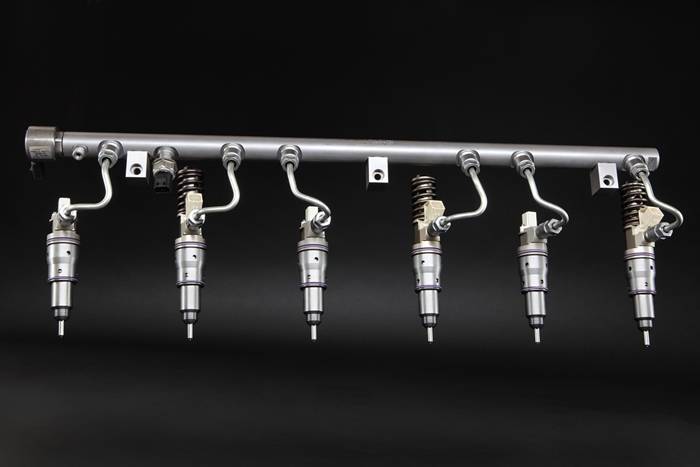Common Rail, also known as high- pressure fuel reservoir is fundamentally a highly-developed system of fuel injection. It utilizes a tube to infuse fuel that is pressured into the engine of a car whilst retaining a stable high pressure. Pressure in the engine makes sure that fuel is broken down while carrying out the injection; that helps in mixing with the air and consequently reduction in pollution that result from automobiles. The mixture of the air and fuel reduce the harmful emissions from vehicles.
A common rail is part of the common rail system. The system has four main elements; the other three parts are:
High-pressure pump- It compresses the fuel and delivers it in the required amount. It continuously feeds fuel to the rail (the high-pressure reservoir) and hence maintains the pressure of the system.
Common rail injectors– They inject the exact quantity of fuel needed into the combustion compartment. They each have a nozzle, solenoid valve for solenoid valve injectors or an actuator for Piezo injectors and hydraulic and electrical links for actuation of the nozzle needle.
The common rail injectors are fixed in the cylinder of each engine and connected to the rail through a short high-pressure pipe. They are controlled by the Electronic Diesel Control which makes sure that the needle of the nozzle opens or closes with the help of the actuator regardless of whether it is a solenoid valve or Piezo.
Electronic diesel control unit- It is usually regarded as the “brain” of the system. It controls the timing and flow of the injector and rail pressure, and at the same time continually monitors the conditions under which the engine operates.
Robert Huber first introduced the first model of the common rail in 1960 in Switzerland. Dr. Marco Ganser took the design to the Federal Institute of Swiss in Zurich and introduced it to the global market as a product during the 1990s. It was during that time that Japan’s Denso Corporation developed common rail fuel system for commercial vehicles.
The conventional engine has been overtaken by modern electronic common rail direct injection. The contemporary common rail system was obtained from Fiat group by Robert Bosch’s German company and developed for mass production. The only difference between the two is that the standard engine was controlled mechanically, and the modern one is controlled electronically by an electronic unit. In the present times, the common rail diesel injectors are found in many car models. Alfa Romeo 156 in 1997 and Mercedes-Benz C 220 were the first cars to be presented to the market with a common rail engine.
How the engine works
The high- pressure fuel pump of the engine’s system stores a reservoir of fuel at an approximate pressure of 28,000 pound-force per square inch (psi) in a common rail. The rail, which is a tube, divides into a fuel injector valve that is wholly controlled by a computer. It also has a nozzle that is machined with precision and a plunger that is controlled by a solenoid valve. Through the help of an on-board computer, the engine can regulate the quantity and pressure of the fuel.
It also takes note of the time that the injection is, in fact, injected while increasing the pressure of fuel injection. It typically results in an enhanced combustion and fuel atomization that consequently lowers exhaust emissions, increase fuel efficiency, and lower fuel consumption.
In the current times, some automobile manufacturing companies have adopted this engine. Some of them include Fiat, Ford, Mitsubishi, Hyundai, and Toyota.
The electronic common rail direct injection system has its pros and cons. Compared to the conventional engines, it offers twenty-five percent more power and torque. In some come countries where diesel is cheaper than petrol, this injection is advantageous. The disadvantage is that, this form of engine is more expensive than a traditional engine.

